Roland Gaia 2 marks a ‘tricky second album’ moment for the series of synths
With its update to the much-loved Gaia SH-01, Roland has turned the hype dial to 11. A certain Public Enemy lyric comes to mind…
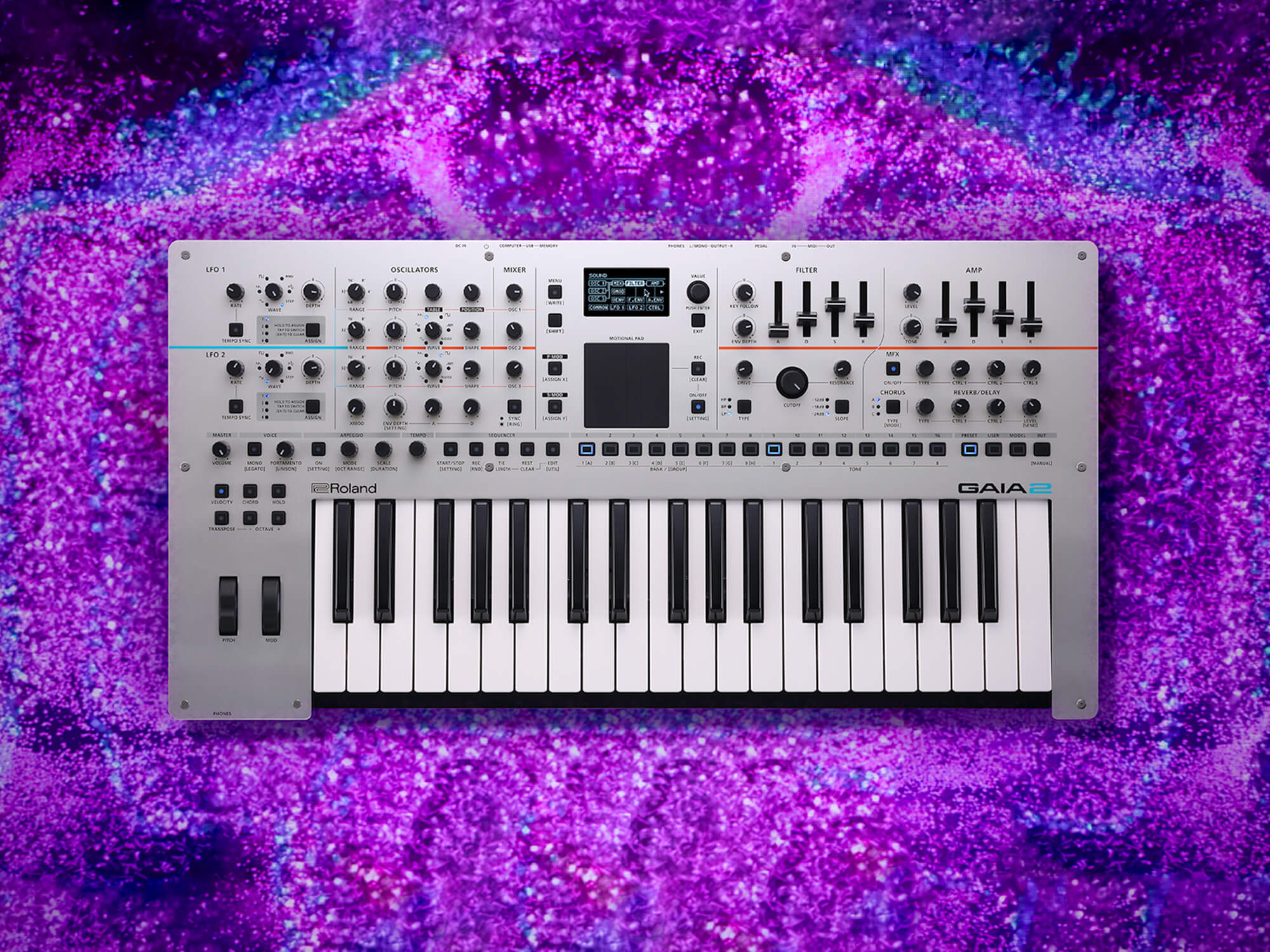
Roland GAIA 2
Review Overview
Our rating
6
Our verdict
⊕ Rich, high-quality sound reproduction
⊕ Includes free SH-101 model
⊖ Many important parameters hidden away in menus
⊖ Pitch and modulation wheels far too small for detailed control
⊖ Distracting screen animations and screensaver
⊖ Scratchy faders
⊖ Abysmal manual
[Editor’s note: This article was updated on 5 December 2023. In a previous version of this review, we incorrectly referred to the Gaia 2 as a ZEN-Core instrument and apologise for any inconvenience caused.]
£769 (street price), roland.com
The Roland Gaia SH-01, discontinued earlier this year, is a synth that’s easy and fun to use, making it ideal for newcomers, yet packs enough synthesis power to make it popular amongst experienced sound designers too. The new incarnation, Gaia 2, has much in common with its predecessor, but also a lot that sets it apart, and not always for the better.
Zen and the art of synth modelling
Gaia 2 is the latest in Roland’s series of synth modelling instruments, joining the likes of the ZEN-Core-powered Jupiter-X, Juno-X and the flagship Fantom series. ZEN-Core is the software platform that many of Roland’s current synth designs run and is the inspiration for Roland’s new Gaia sound engine. It lies at the heart of many Roland Cloud software offerings too.
In the case of Gaia 2’s sound engine, this means, alongside the new model developed for the instrument, Roland has pre-installed a free SH-101 model, and you can add additional Roland classics via purchasable Model Expansions. However, Roland stresses that the Gaia 2 is not a ZEN-Core instrument.
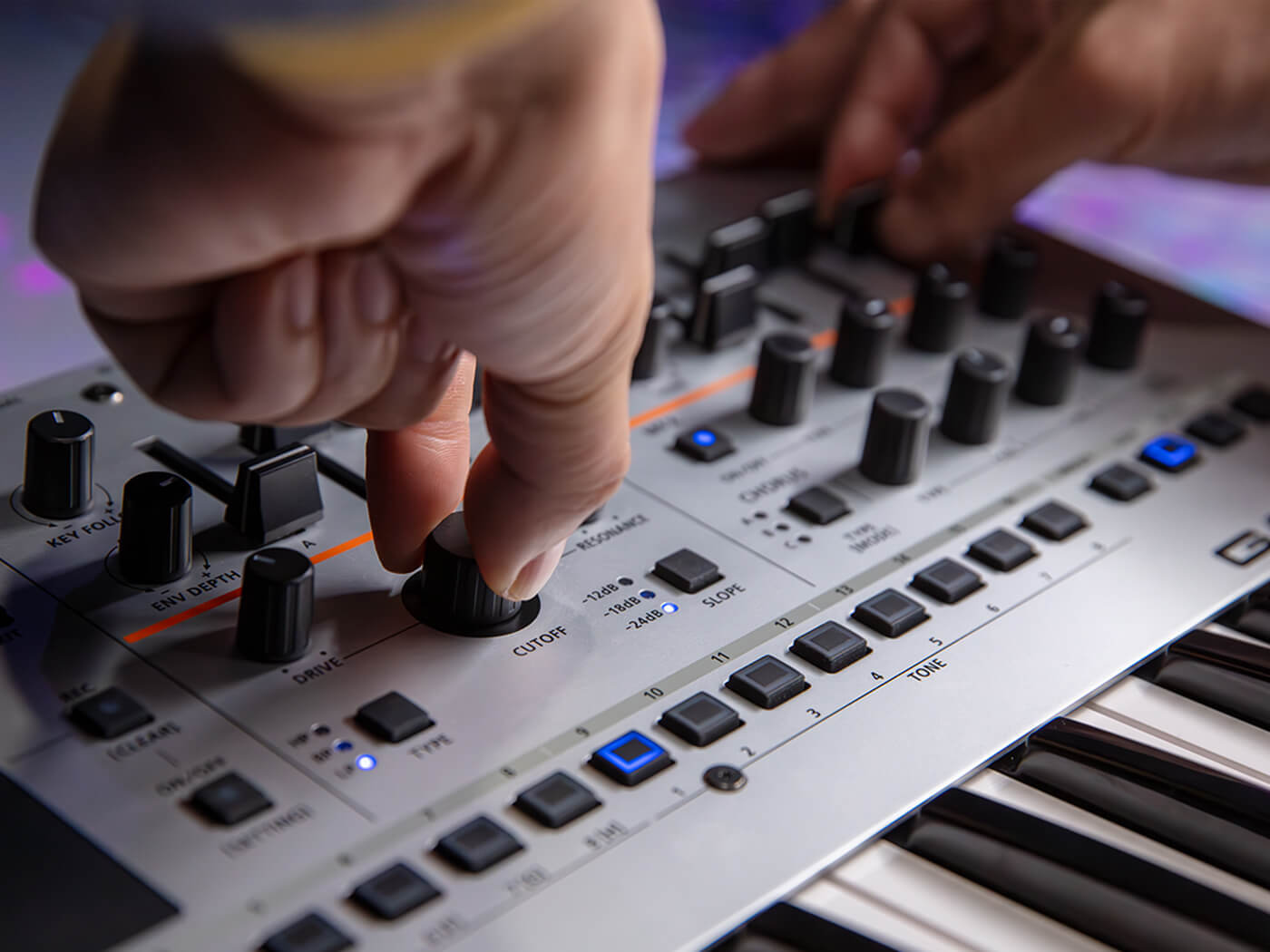
The Gaia 2 synth model is quite similar to the original Gaia SH-01, but with a number of welcome additions. The original’s single virtual-analogue oscillator has been doubled-up and a new wavetable oscillator added. This comes with 64 varied wavetables, each containing 128 waveforms, but unfortunately cannot load custom wavetables. What it can do, however, is apply wavetable folding – conceptually similar to adjusting the pulse width of a square wave – which Roland calls Phase Modulation (or P-Mod). It also sports a built-in waveshaper (Shape Mod / S-Mod in Rolandese), ideal for enhancing the harmonic content of the source waveforms.
The filter section has also been updated, and now offers low-, band- and high-pass filtering at 12, 18 or 24dB/octave, as well as a drive stage to add extra bite. The filter can self-oscillate and has a pleasing if inoffensive character, but if you need additional filters the enhanced effects section contains a variety of different types that can be applied as needed.
Modulation capabilities have been improved slightly with the addition of a second LFO, but it remains the case that neither the amp’s nor the filter’s ADSR envelope can be used as a modulation source; the only envelope that can be applied to varied destinations is the so-called Oscillator Envelope, but this is only a basic two-stage AD affair.
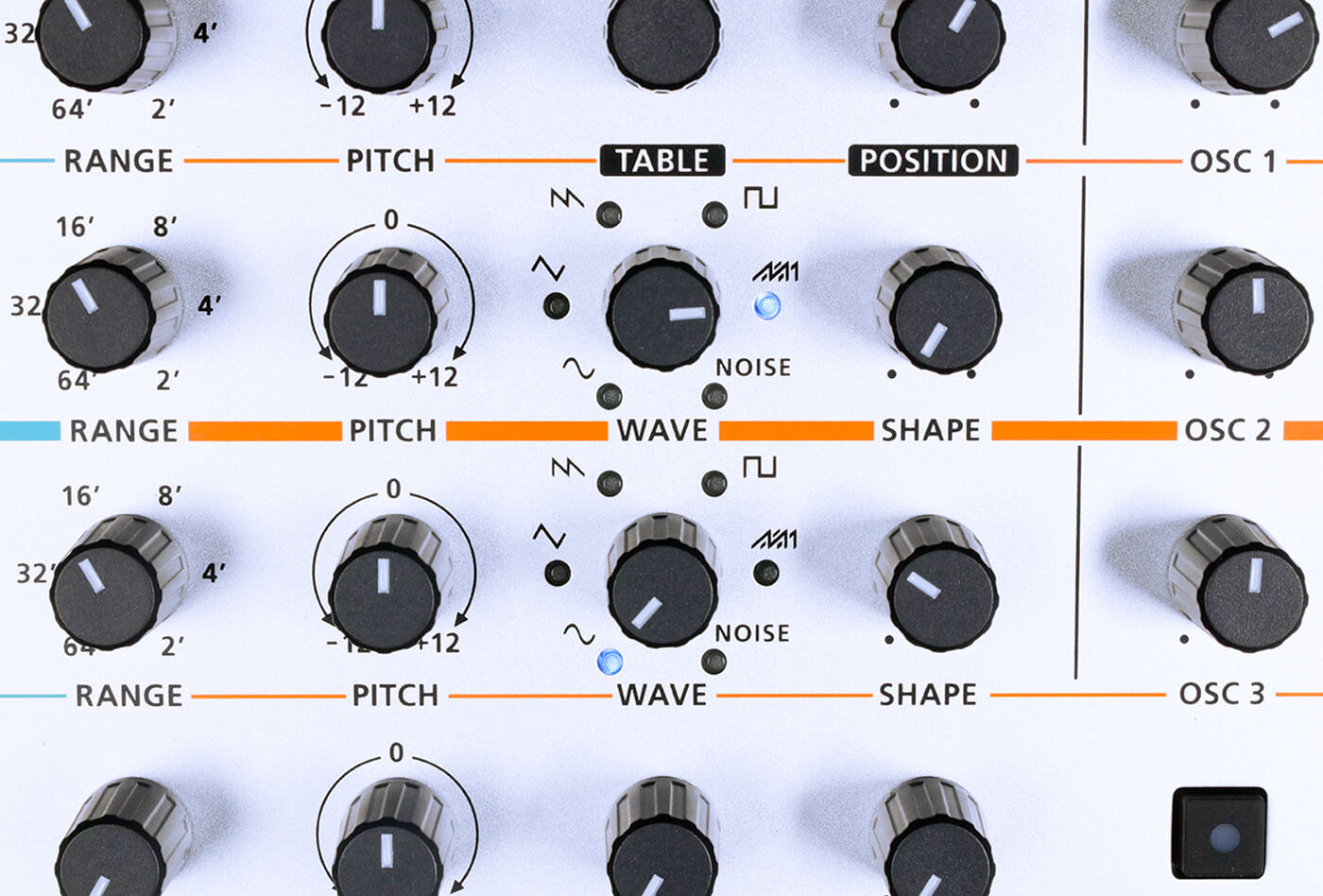
Sounds and presets
Gaia 2’s three oscillator (virtual) architecture is not groundbreaking – many synths use a very similar set-up – but it does provide a rich toolset for sound design. The freebie SH-101 model adds a whole extra palette of sounds and sound design possibilities on top of this, but this isn’t a review of the SH-101 so ‘nuff said about that!
A total of 256 read-only factory presets are included, arranged into four groups of eight banks, each containing eight presets. The User storage area extends this by a further four groups for a total of 512 slots, some of which have been pre-populated by Roland. Roland’s habit of grouping patches in eights has its roots in early preset-capable synths, but in the 21st Century it’s bordering on the obtuse, and is needlessly awkward to work with via MIDI.
There are some very nice presets here, although we felt there were too many that were either too elaborate or too old fashioned to be particularly useful. Also, the effects section contains a pleasing new reverb processor with multiple modes, but Roland has tried too hard to make us aware of it, turning otherwise good sounds to mush with the amount of ‘verb they’ve been drenched in. Don’t get us wrong, the sound design is good, and the sound quality is outstanding, but we found too few presets that inspired musical ideas, and too many that elicited a “meh… Next” response.
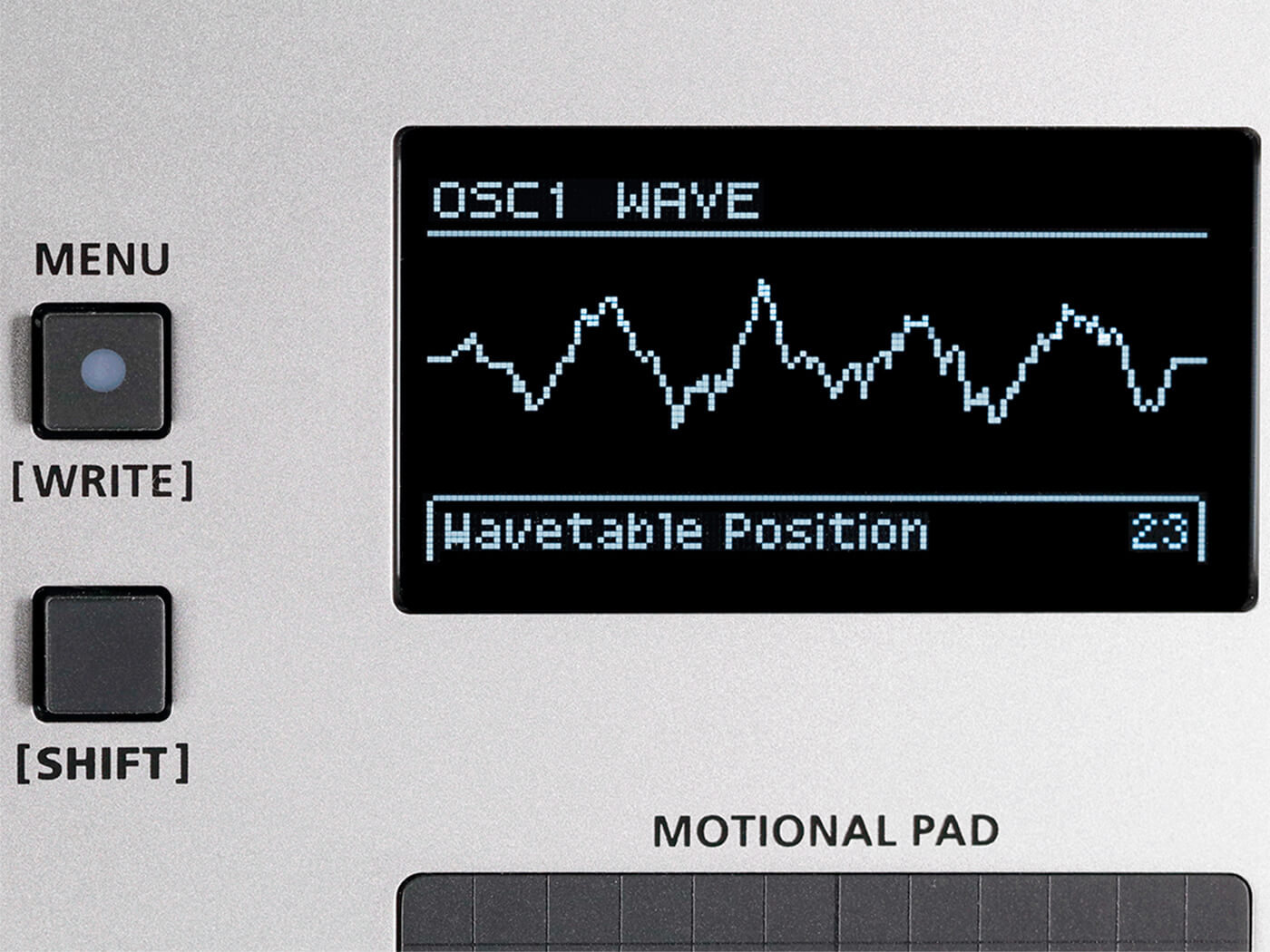
Portmanteau pad
At the centre of Gaia 2’s panel sits an X-Y touchpad that serves a variety of purposes. Roland has given this touchpad an exceptionally silly name, a portmanteau of “motion” and “emotional”, that we can’t bring ourselves to use. We will therefore refer to it as the Portmanteau pad.
The Portmanteau pad, then, makes up for Gaia 2’s dearth of routable envelope generators by allowing a pattern of movement to be recorded and used as a modulation source, this pattern being stored with the patch. Patterns can be enabled or disabled at the touch of a button, and the pad can also be quickly switched to directly control the wavetable oscillator’s P-Mod or S-Mod values, useful during both performance and sound design.
Unlike most touchpads, which have a smooth and silky feel, this particular pad has a rough texture. This doesn’t feel the greatest when whisking your finger across it, and is likely to get quite grotty over time as dirt and grease get embedded in its texturing.
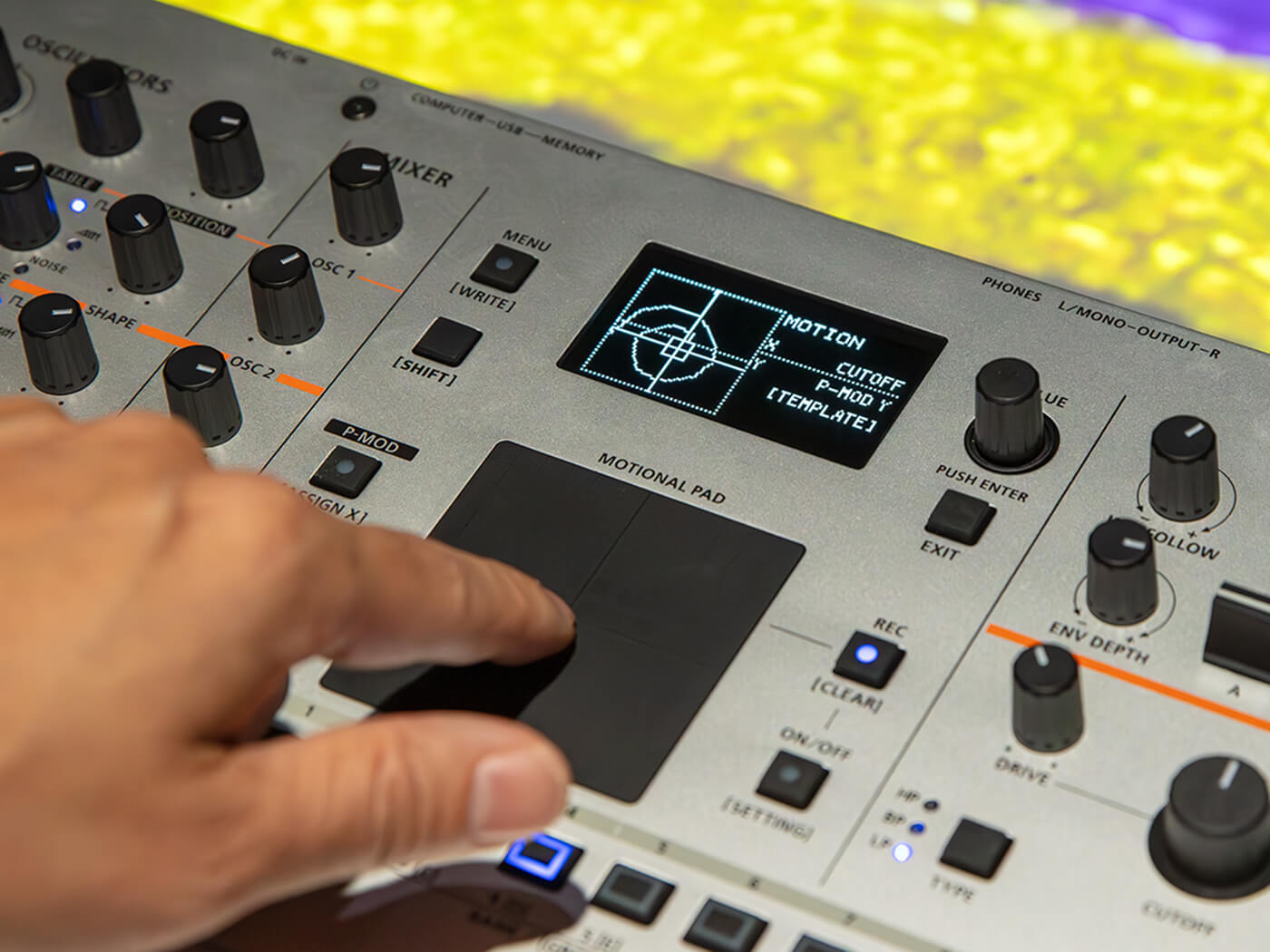
Side games
From around the mid-80s, Roland (and most other synth manufacturers) included in their instruments a side game called Menu Dive. In this game, the player was tasked with using a small LCD display and awkwardly-arranged buttons to navigate a fiendish maze in search of a special prize, namely the ability to adjust the desired synth parameter. This side game never made it into Gaia SH-01 (replaced by an exciting key combination guessing game), but Menu Dive is back in Gaia 2. Yippee.
Despite Gaia 2’s plethora of hands-on controls, almost every area of the synth features important parameters that can only be accessed via a game of Menu Dive. The game has been simplified somewhat thanks to Gaia 2’s monochrome OLED display, and it now has two ways to play: either twiddle and press the Value knob, or stroke and tap the Portmanteau pad, but we feel gameplay would have been improved infinitely had Roland just given Gaia 2 a touch sensitive display. There are also Shift and Menu buttons, which you can press in combination with other buttons on the Gaia 2, to help you reach your objective quicker but we’d prefer manyf options to be more immediately accessible.
When not playing Menu Dive, the display shows a variety of information about the currently-loaded sound. Preset name and number occupy the upper area, while the lower area is taken up with an animation of any Portmanteau pad movement stored in the preset, alongside a real-time waveform display. We found the flickery animations to be hugely distracting, and largely useless given the display’s low resolution, so it’s good that the animated elements can be disabled. This then only leaves the screensaver to distract you when it kicks in!
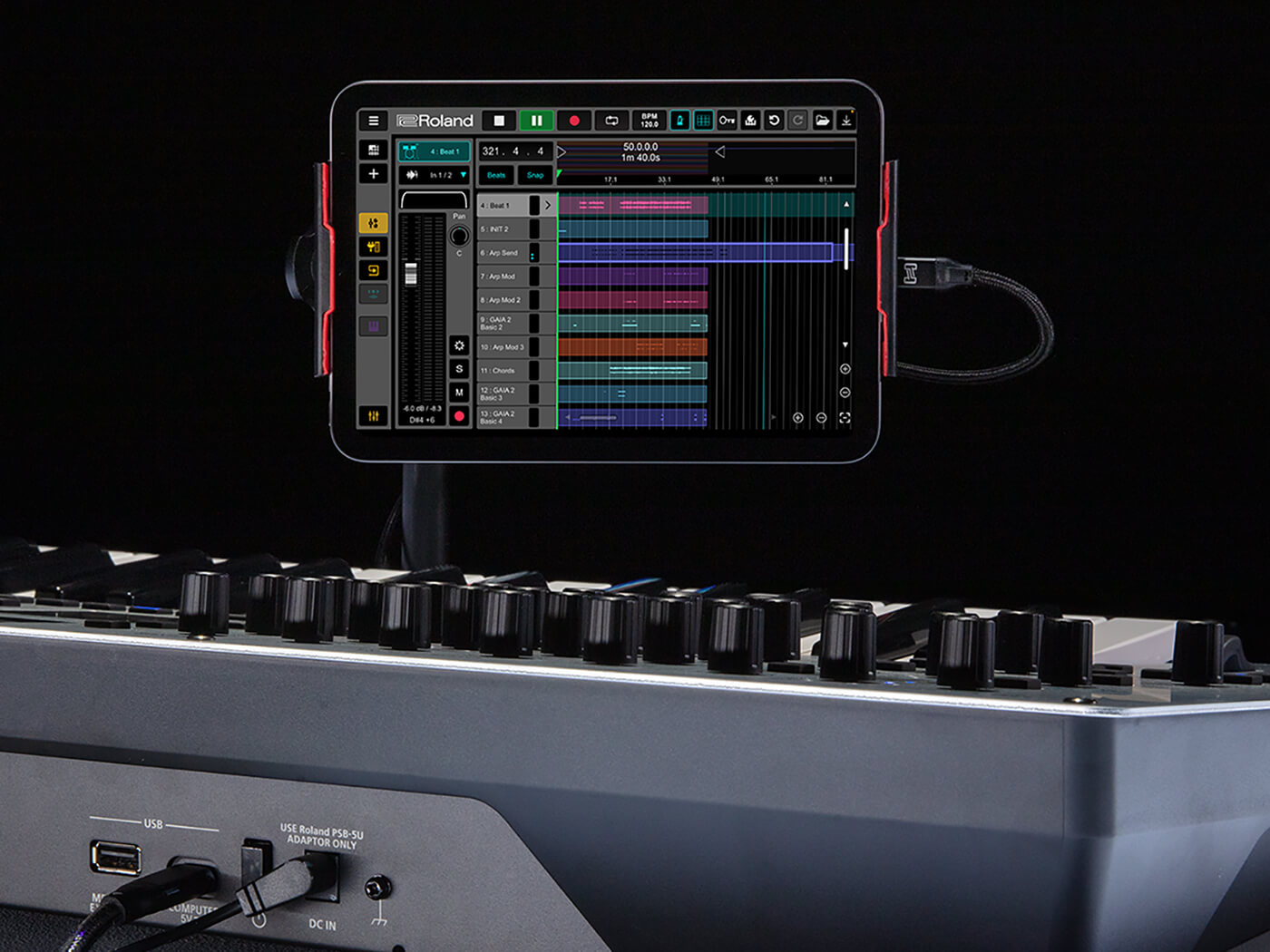
Design and build
The aluminium panel that houses all of Gaia 2’s controls looks smart and solid, but sits somewhat incongruously with the cheaper- and weaker-feeling underside of the enclosure. The rotary controls feel solid and move smoothly, although switch-style knobs are simply regular knobs with detents and so don’t feel very switch-like. The faders, used for amplitude and filter envelopes, aren’t as nice and aren’t even consistent. Some are a bit scratchy and others are very scratchy.
Gaia 2’s three-octave, full-size-key keyboard is an improvement on the original, with a firm, high-quality feel and response. Sadly, it lacks aftertouch sensitivity, and we experienced hanging notes quite often, especially when playing fast passages. This is almost certainly a software-related issue, so expect it to be fixed in a future firmware update.
In place of the classic Roland pitch-and-modwheel-joystick-combo-thing, Gaia 2 has separate pitch and modulation wheels. But these wheels are tiny, and consequently have too small a throw to allow detailed control. Frankly they’re a joke, and completely unacceptable on something that costs the best part of £800.
Another joke is the so-called manual, a collection of flow charts, tables, labels, arrows, and gaudy, migraine-inducing colours that take far more brain power to tease information from than would a conventional written tome. Whatever fever-dream inspired this dog’s dinner, we hope Roland realises it just doesn’t work and publishes a proper manual without delay.
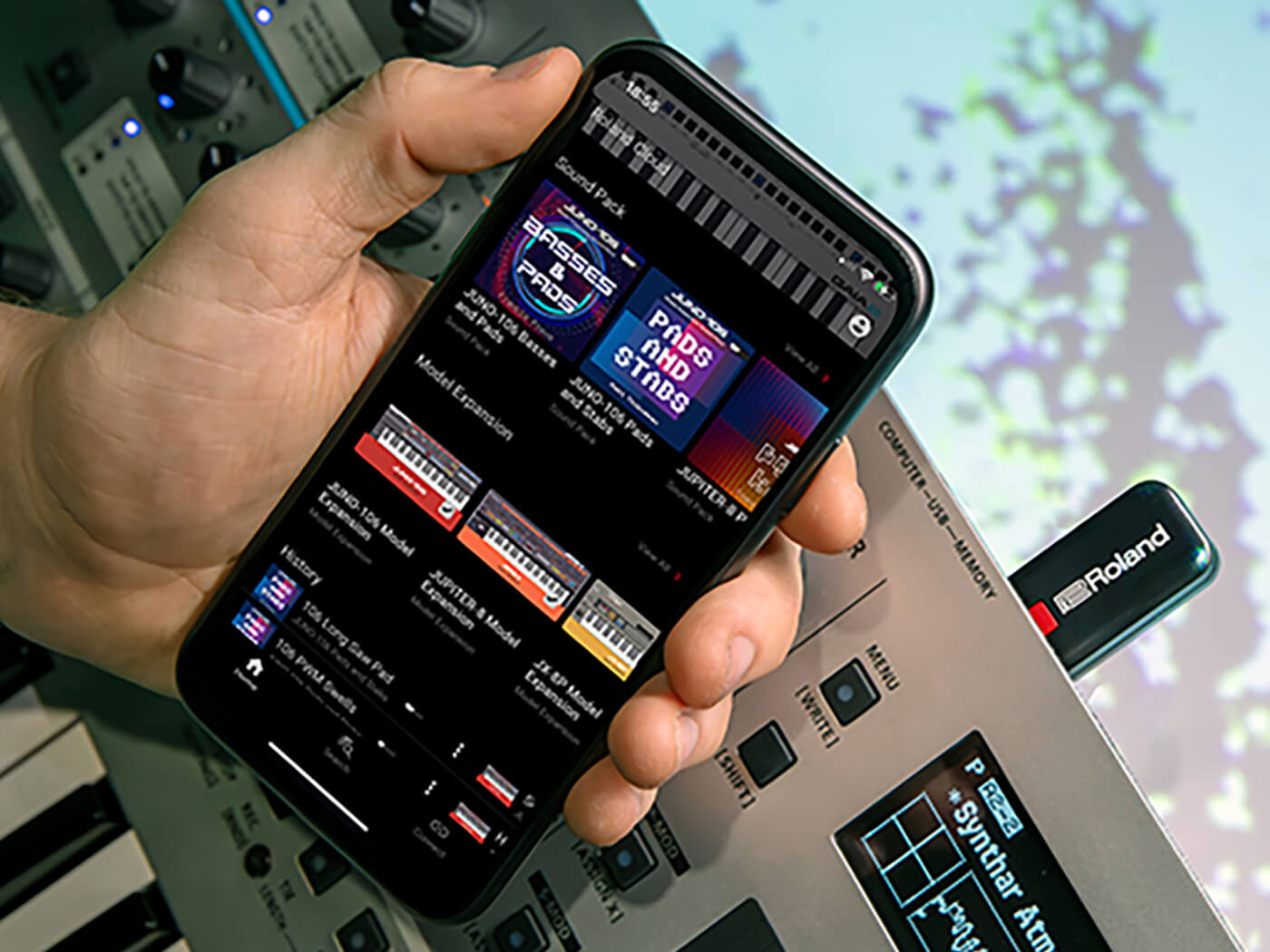
Mixed bag
We thought we’d love the Gaia 2 – indeed we wanted to love it – because on paper it ticks all the boxes. Versatile, high-quality sound engine? Check! Hands-on control? Check! Large palette of sounds? Check! Ability to load entirely different synth models? Check! Granted, the synth’s (virtual) architecture is little different to that used by countless other synths, but there’s a good reason for this; it’s a very capable architecture!
However, what we’re looking at here – let’s face it – is a software instrument and control surface. Nearly £800 is a lot to fork out for this if you already have a computer whilst, for live performers, we’re not convinced that the synth is tough enough for life on the road. More to the point, this asking price places Gaia 2 into a bracket where we expect to find less jank and more polish.
Key features
- Three-octave keyboard and extensive hands-on control
- Wavetable oscillator with 64 wavetables containing 128 waveforms each
- Wavetable waveforms shapeable via Phase Mod and Shape Mod
- 2 virtual analogue oscillators with X-Mod, Ring Mod and Oscillator Sync
- Multi-mode filter with low-, band- and high-pass modes at 12, 18 or 24 dB/octave
- Dedicated amp and filter ADSR envelopes
2 LFOs - High quality multi-effects
- Sound engine capable of loading load Model Expansions
- Comes with free SH-101 Model Expansion